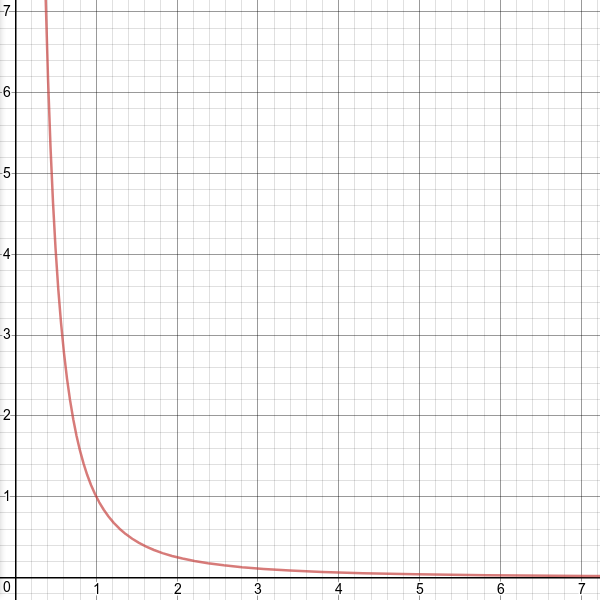
This is what 1/d
2 looks like (power density on the y-axis and distance on the x-axis). Power density is very high close to the antenna
and goes down quickly as the distance increases. 1/d
2 is the power density over distance for a non beam forming unidirectional antenna. Devices with more complicated directional antennas would be worse. That is: the power density of those devices would decrase less quickly with distance.


